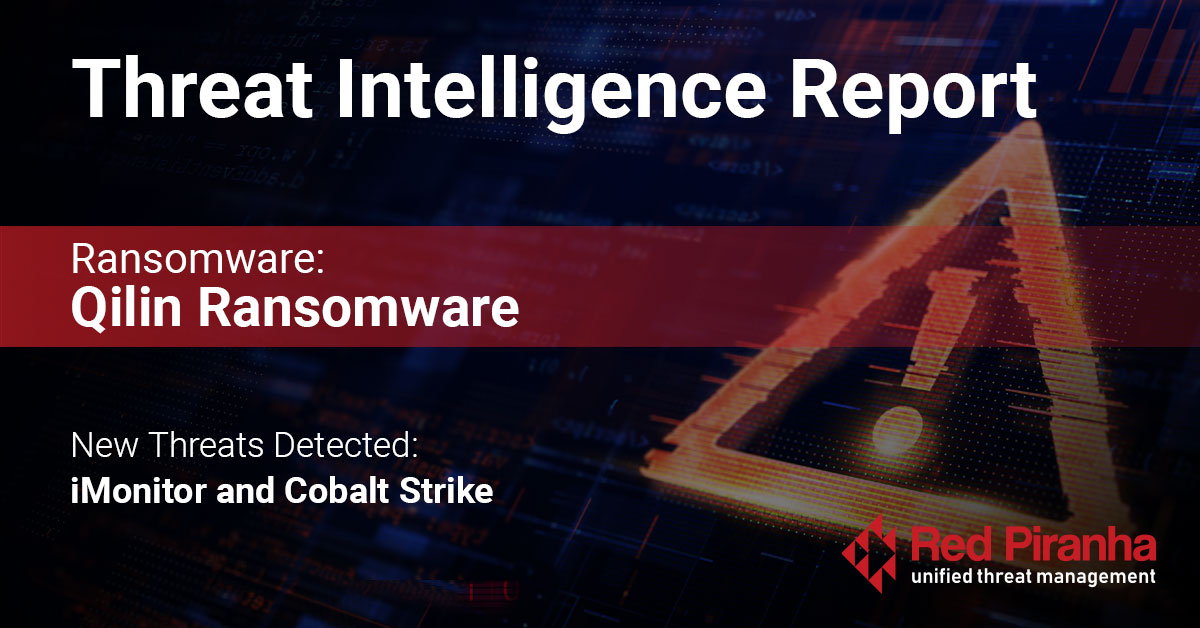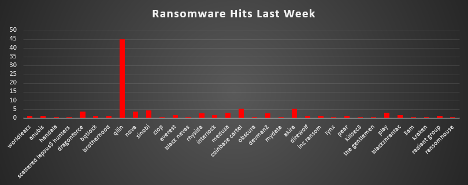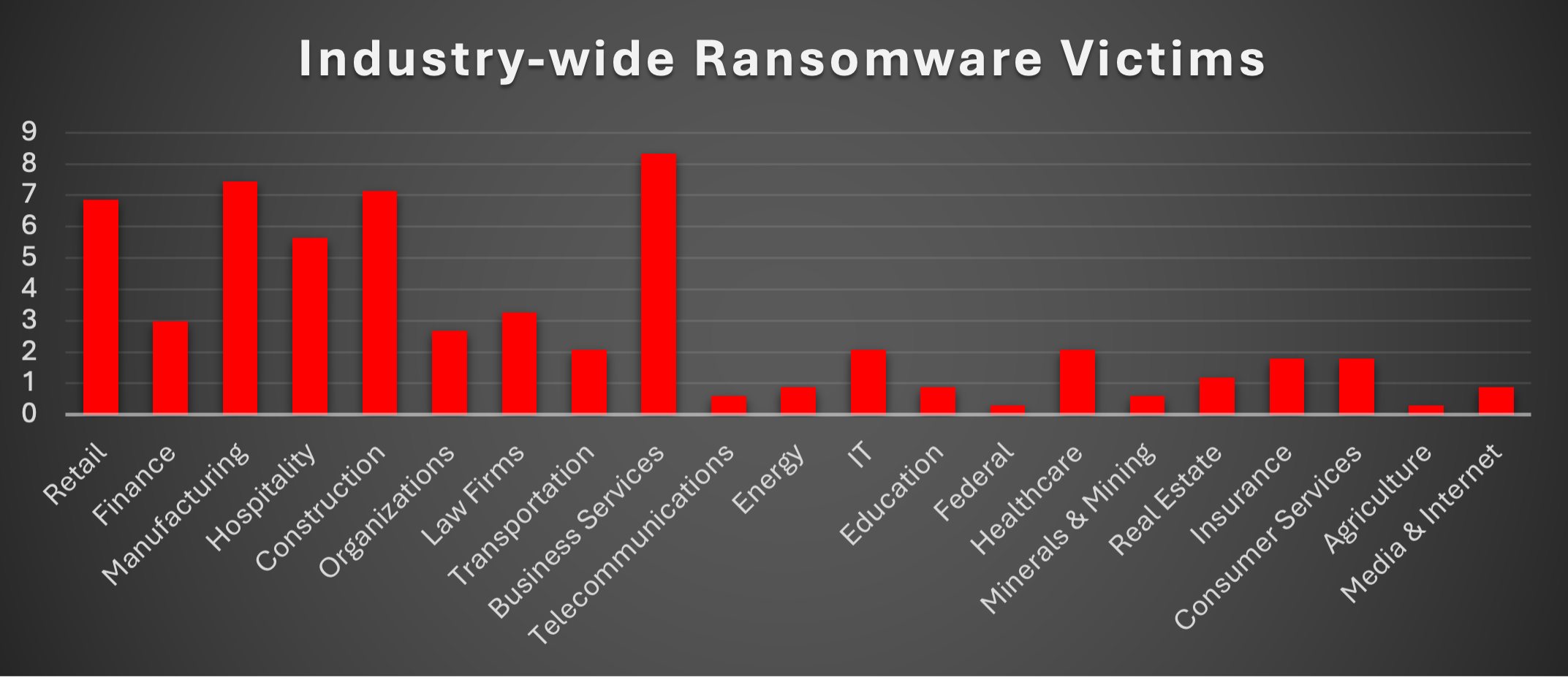
| New Threats Detection Added | • iMonitor • Cobalt Strike |
Detection Summary | |
Threat Protections Integrated into Crystal Eye | 84 |
Newly Detected Threats | 4 |
Weekly Detected Threats
The following threats were added to Crystal Eye this week:
Threat name: | iMonitor | ||||||||||||||||||
iMonitor appears to be a new malware that appears to mimic employee ‘spyware’. This malware is based on Gh0strat, a Remote Access Tool (RAT) that has been used by multiple threat actors since 2009. It’s been used to infect critical infrastructure such as energy organisations and telecommunications. The RAT has the ability to capture keystrokes, monitor webcams and microphones, deploy more malware, and have full access to the infected system via a remote shell. iMonitor is known to send system information to attacker controlled C2 servers, and initiate RDP connections. | |||||||||||||||||||
Threat Protected: | 09 | ||||||||||||||||||
Rule Set Type: |
| ||||||||||||||||||
Class Type: | Command-and-Control | ||||||||||||||||||
Kill Chain: |
| ||||||||||||||||||
Threat name: | Cobalt Strike | ||||||||||||||||||
Cobalt Strike is a commercial Remote Access Tool (RAT) that is advertised as simulation software designed to execute attacks and emulate post-exploitation techniques used by Threat Actors. Because of the features that Cobalt Strike has included, it is used by threat actors as well. There have been many threat actors found to be using cobalt strike for malicious purpose such as TA group Leviathan, a Chinse state-sponsored group that has targeted various sectors such as government, healthcare and defence. There has been a ransomware group identified to be using cobalt strike, Play uses their own encryption software called Playcrypt that has been used in government, healthcare and other critical infrastructure. | |||||||||||||||||||
Threat Protected: | 06 | ||||||||||||||||||
Rule Set Type: |
| ||||||||||||||||||
Class Type: | Command-and-Control | ||||||||||||||||||
Kill Chain: |
| ||||||||||||||||||
Known Exploited Vulnerabilities (Week 3 - October 2025)
For more information, please visit the Red Piranha Forum:
https://forum.redpiranha.net/t/known-exploited-vulnerabilities-catalog-3rd-week-of-october-2025/608.
Threat | Description | ||
CVE-2025-54253 | 10 | Adobe Experience Manager Forms contains an authentication bypass vulnerability that can allow an unauthenticated remote attacker to gain access to the system, this vulnerability affects versions before 6.5.23.0 and was fixed in version 6.5.0-0108. The vulnerability itself is primarily an authentication bypass, however, due to struts devmode being enabled this can result in code execution on the system. | |
CVE-2025-47827 | 4.6 | IGEL OS contains a vulnerability within the cryptographic signature verification of the igel-flash-driver module that can allow for a Secure Boot bypass resulting in the ability to mount a filesystem from an unverified SquashFS image. | |
CVE-2025-24990 | 8.3 | Microsoft Windows Agere Modem Driver contains an untrusted pointer dereference vulnerability within the ltmdm64.sys driver that can result in an attacker with local access to escalate privileges. | |
CVE-2025-59230 | 8.1 | Microsoft Windows contains a privilege escalation vulnerability within the Windows Remote Access Connection Manager that can allow for an attacker with local access to escalate privileges to SYSTEM. | |
CVE-2025-6264 | 7.8 | Rapid7 Velociraptor contains a privilege escalation vulnerability that can allow for command execution, this vulnerability is a result of incorrect default permissions which can enable users with COLLECT_CLIENT permissions the ability to execute commands on endpoints. | |
CVE-2016-7836 | 8.8 | SKYSEA Client View contains a vulnerability within the management console that can allow an unauthenticated remote attacker to bypass authentication and execute code on the system. |
| Ransomware Report | |
The Red Piranha Team conducts ongoing surveillance of the dark web and other channels to identify global organisations impacted by ransomware attacks. In the past week, our monitoring revealed multiple ransomware incidents across diverse threat groups, underscoring the persistent and widespread nature of these cyber risks. Presented below is a detailed breakdown of ransomware group activities during this period. Ransomware Victims – Weekly Overview Qilin overwhelmingly dominated ransomware activity this week, responsible for 45.11% of all reported incidents. This outsized share highlights either a coordinated surge in operations or significant disclosure of victim cases, reaffirming Qilin’s position as one of the most aggressive and persistent groups currently active. A mid-tier cluster of activity followed at much lower volumes. Akira (5.43%) and Coinbase Cartel (5.43%) stood out as notable operators, continuing to demonstrate steady victimisation across multiple industries. Sinobi (4.35%), DragonForce (3.8%), Nova (3.8%), Medusa (3.26%), and Play (3.26%) also maintained visibility, underscoring the persistence of established groups in the ecosystem. Additional actors with moderate presence included Rhysida (2.72%), DevMan2 (2.72%), Everest (1.63%), Interlock (1.63%), and BlackShrantac (1.63%). These groups continue to operate at smaller scales but represent ongoing risk due to their opportunistic targeting strategies. A wide range of groups accounted for 0.54-1.09% each, including WorldLeaks, Anubis, Handala, Scattered Lapsus$ Hunters, BqtLock, Brotherhood, Direwolf, Inc Ransom, Pear, The Gentlemen, KillSec3, Obscura, Radiant Group, RansomHouse, 3AM, Kraken, Lynx, MyData, and Black Nevas. While their activity levels were relatively minor, their collective presence illustrates the fragmented nature of the ransomware threat landscape, where dozens of smaller actors remain active alongside dominant players. This week’s distribution reflects a clear imbalance: ransomware activity was heavily concentrated under Qilin’s banner, while a broad mix of secondary and fringe groups sustained the ecosystem’s diversity and unpredictability. |

Qilin Ransomware Overview
Qilin, also known as Agenda, operates a professional RaaS platform with distinct Windows and Linux/ESXi binaries. Affiliates receive tailored builds, often password-protected to thwart sandboxing, and deploy double-extortion strategies leveraging encrypted files and exfiltrated data.
Leak and Extortion Tactics: Qilin maintains a Tor-based leak site for naming victims and publishing stolen data. Affiliates may also auction data to third parties if initial extortion fails. The group has expanded into triple extortion, threatening DDoS and media exposure.
High-Profile Target: Asahi Group Holdings (Japan) suffered significant disruption from Qilin during this period. Negotiation efforts failed, and 27GB of sensitive data were publicly leaked. Other victims announced this week include France’s Paris Retina Vision and Spain’s Tax Agency.
Detailed TTPs
Initial Access
- Spearphishing with malicious attachments (e.g., LNK, ZIP, ISO).
- Credential harvesting and brute-force against RDP/VPN endpoints.
- Exploitation of Citrix ADC, Fortinet VPN, and VMware ESXi flaws.
- Abuse of initial access brokers (IABs) for compromised accounts.
- MFA bombing and session hijacking to bypass identity protections.
Execution
- Deployment of ransomware via PsExec, WMI, and GPO.
- Safe Mode reboots to bypass security tools (using bcdedit, AutoLogon).
- Use of LOLBins: rundll32, mshta, cmd, and PowerShell.
- Packed binaries (Themida, UPX) evade static detection.
Persistence
- Creation of new local admin accounts.
- Scheduled tasks and service creation for payload delivery.
- Registry modifications: HKLM Run keys and boot configurations.
- Deployment of remote access tools (e.g., AnyDesk, MeshCentral).
Privilege Escalation
- Use of Mimikatz and LSASS dumping for token stealing.
- BYOVD attacks: deployment of vulnerable drivers (TPwSav.sys).
- Exploitation of UAC bypass techniques.
- Token impersonation and process injection.
Defence Evasion
- Windows Defender tampering: DisableRealtimeMonitoring = 1.
- Shadow copy deletion via vssadmin, wbadmin, diskshadow.
- Event log clearance with wevtutil and PowerShell.
- File renaming and timestamp modification to avoid detection.
- Packing and code obfuscation to hinder reverse engineering.
Credential Access
- LSASS memory scraping with direct system calls.
- Credential dumping via reg save of SAM/SECURITY hives.
- Browser credential harvesting (Chrome, Firefox, Edge).
- NTDS.dit extraction for domain-wide credential capture.
Discovery
- AD enumeration using built-in tools and AdFind.
- Network scanning (Nmap, AngryIP, SoftPerfect).
- Identification of backup systems and NAS devices.
- Software inventory via WMI and registry analysis.
Lateral Movement
- Use of PsExec and WMI for remote command execution.
- GPO abuse for ransomware deployment across domains.
- RDP sessions using stolen credentials.
- SSH access to ESXi hosts for Linux variant deployment.
Collection & Exfiltration
- Data aggregation into staging directories.
- Compression with 7-Zip, WinRAR, often encrypted.
- Exfiltration to cloud storage (MEGA, Dropbox) via Rclone.
- Use of FTP/SFTP servers controlled by threat actors.
Impact
- AES-CTR file encryption with RSA-4096 key wrapping.
- Ransom notes: QILIN-ReadMe.txt, _RECOVER.txt.
- Encrypted file extensions: .MmXReVIxLV, .X0aMJ, unique per target.
- Public shaming via leak sites and threat of data sale.
MITRE ATT&CK Mapping
Tactic | Technique (ID) | Description |
Initial Access | T1566, T1190, T1078 | Phishing, exposed RDP/VPN, valid accounts |
Execution | T1059, T1053.005, T1569.002 | PowerShell, scheduled task, service creation |
Persistence | T1547.001, T1053.005 | Registry keys, Safe Mode auto-login |
Priv Esc | T1003, T1543, T1068 | LSASS dump, BYOVD, system service abuse |
Defence Evasion | T1070.001, T1562.001, T1490 | Log clearing, AV disable, shadow deletion |
Credential Access | T1003, T1555, T1552.001 | LSASS + browser credentials, SAM dumping |
Discovery | T1087, T1046, T1069 | Account, network, group discovery |
Lateral Movement | T1021.002, T1021.001, T1484.001 | SMB, RDP, GPO push |
Exfiltration | T1041, T1567.002 | FTP/Cloud exfiltration |
Impact | T1486, T1490 | File encryption, recovery inhibition |
Indicators of Compromise (IOCs)
Hashes:
- 31c3574456573c89d444478772597db40f075e25c67b8de39926d2faa63ca1d8
- c9707a3bc0f177e1d1a5587c61699975b1153406962d187c9a732f97d8f867c5
- a7f2a21c0cd5681eab30265432367cf4b649d2b340963a977e70a16738e955ac
- 13cda19a9bf493f168d0eb6e8b2300828017b0ef437f75548a6c50bfb4a42a09
- 9e1f8165ca3265ef0ff2d479370518a5f3f4467cd31a7b4b006011621a2dd752
IPs:
- 193.106.175.107
- 45.134.140.69
- 184.174.96.70
- 184.174.96.74
- 180.131.145.73
- 188.34.188.7
- 185.208.156.157
- 185.196.10.19
C2 & Leak Infrastructure:
- ftp://dataShare:nX4aJxu3rYUMiLjCMtuJYTKS@85.209.11.49
- ftp://dataShare:2bTWYKNn7aK7Rqp9mnv3@188.119.66.189
- hxxp://catcompany[.]info
- 80.64.16.87
- 176.113.115.97
- 176.113.115.209
Artifacts:
- Ransom notes: _RECOVER.txt, QILIN-ReadMe.txt
- Encrypted extensions: .MmXReVIxLV, .X0aMJ, custom per attack
- Suspicious files: avupdate.dll, IPScanner.ps1, logon.bat, main.exe, setlang.exe, vcredist_x86.exe, tniwinagent.exe
Registry & Config Changes:
- HKLM\SOFTWARE\Microsoft\Windows Defender\Real-Time Protection\DisableRealtimeMonitoring = 1
- Safe Mode: HKLM\SYSTEM\CurrentControlSet\Control\SafeBoot\Option
- AutoLogon Keys: DefaultUserName, DefaultPassword, AutoAdminLogon
Tools Used:
Rclone, WinRAR, 7-Zip, PsExec, AdFind, AnyDesk, Mimikatz, PowerView, Process Hacker
Detection & Mitigation Recommendations
- Alert on registry edits to Defender policies.
- Monitor vssadmin / wbadmin / diskshadow usage.
- Detect encryption-like file activity spikes.
- Monitor Rclone uploads and unknown FTP connections.
- Watch for Safe Mode boot flag modifications.
- EDR policy: block LSASS dumps, enable tamper protection.
- Segment ESXi access and disable unused management interfaces.
- Enforce MFA, disable legacy protocols.
- Flag creation of new admin accounts and GPO changes.
- Block unapproved software: WinRAR CLI, Rclone, AdFind.
Ransomware Victims Worldwide
The United States dominated ransomware victimisation this week, accounting for 52.38% of global incidents. This concentration reflects attackers’ continued preference for US-based targets due to their large digital ecosystems, economic value, and operational pressure points.
India (5.95%) and Canada (5.65%) followed as the most impacted outside the U.S., underscoring their growing presence in the ransomware threat landscape. The United Kingdom also featured prominently with 4.46%, showing continued targeting of European financial, legal, and service-based industries.
Australia (2.98%), France (2.38%), and the United Arab Emirates (2.38%) formed the next tier, highlighting adversaries’ sustained campaigns across both Western economies and Middle Eastern hubs. Germany (2.08%) added further evidence of consistent ransomware impact in Europe.
A broad set of mid-level activity was seen across Italy (1.19%), Brazil (1.79%), Denmark (0.89%), Japan (0.89%), China (0.89%), and Mexico (0.89%), with each country hosting multiple reported victims. These attacks illustrate ransomware’s spread into both advanced industrial economies and rapidly digitising emerging markets.
Smaller but noteworthy cases (0.3–0.6% each) were distributed widely across Argentina, Peru, the Philippines, Israel, Romania, Spain, Thailand, Venezuela, Botswana, Mongolia, and Indonesia, among others. Countries such as Zimbabwe, South Africa, Vietnam, Croatia, Austria, Chile, Nigeria, Morocco, Iraq, Malaysia, and New Zealand also reported isolated incidents, underscoring ransomware’s truly global reach.
This geographic spread reinforces a dual trend: ransomware remains heavily concentrated in core economies (U.S., India, Canada, U.K., Australia), while opportunistic attacks continue to strike globally, ensuring no nation is immune from its impact.

Industry-wide Ransomware Victims
Business Services led the ransomware victim landscape this week with 8.33% of reported incidents. Its role as a backbone for IT, consulting, and outsourcing makes it a lucrative target, offering attackers potential access to multiple downstream clients through a single compromise.
Manufacturing (7.44%) and Construction (7.14%) followed closely, underscoring ransomware’s continued focus on industries with time-sensitive operations and minimal tolerance for downtime. These sectors remain vulnerable due to reliance on legacy systems and fragmented supply chains.
Retail (6.85%) and Hospitality (5.65%) also featured prominently, reflecting adversaries’ interest in customer-facing verticals with high transaction volumes and valuable payment data. The combination of widespread digital exposure and operational dependency makes these industries attractive targets for extortion.
Mid-tier sectors included Law Firms (3.27%), Finance (2.98%), and Organisations (2.68%), all of which store sensitive or high-value data. Transportation, IT, and Healthcare (each 2.08%) added further diversity to ransomware campaigns, emphasising attackers’ willingness to exploit both operational and data-rich environments.
Lower-level but consistent targeting was observed in Insurance and Consumer Services (1.79%), Real Estate (1.19%), and Energy, Education, and Media & Internet (each 0.89%). Niche industries such as Telecommunications and Minerals & Mining (0.6% each), along with Federal and Agriculture (0.3% each), reported isolated but notable incidents, reminding us that no vertical is exempt.

